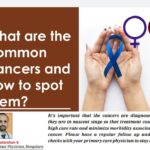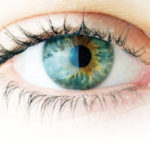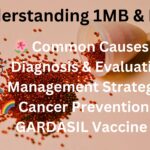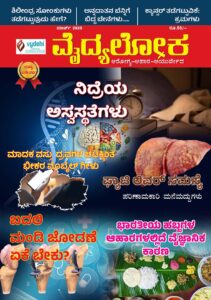Slap lesion: What to do? Every Sport person or Fitness freak might experience shoulder pain at some point of time in his or her routine work here and there. When the pain becomes severe and when it been diagnosed as SLAP, then what to do?
A SLAP tear or SLAP lesion is an injury to the glenoid labrum (fibrocartilaginous rim attached around the margin of the glenoid cavity). Tear of the superior labrum near to the origin of the long head of biceps means where this one of the tendon of biceps having attachment were first described among throwing athletes by Andrews in 1985. The label of ‘SLAP’, an abbreviation for superior labrum anterior and posterior, was coined by Snyder et al, who went on to create a classification system for these lesions.
An unstable shoulder joint can be the cause or the result of a labral tear. Injuries to the labrum are common and can cause a great deal of pain and may make it hard to move your arm. A labral tear can occur from a fall or from repetitive work activities or sports that require you to use your arms raised above your head (Overhead activity). Injuries to the superior labrum can be caused by acute trauma or by repetitive shoulder motion. The symptoms be like deep aching pain, popping, clicking, catching, locking or grinding in the shoulder, Inability to lie on the affected shoulder and pain while lifting the arm or object.
Role of physiotherapy
Physical therapy is the best non- operative treatment, Physical therapist is specialized to treat SLAP tear via conservative methods because SLAP lesion poses a significant challenge to the physical therapist due to its complex nature and wide variety of causative factors associated with these lesions. A thorough clinical evaluation and proper identification of the extent of labral injury is important in order to determine the treatment.
In SLAP lesion the Clinical examination revealed the Faulty posture of the shoulder, rounder shoulders, scapular dyskinesia (abnormal movement of shoulder blades during shoulder movement), Tenderness on the shoulder joint and upper arm, Trigger points over the scapular region, Decreased range of motion of shoulder, Weakness of scapular stabilization muscles. The exercise program is based on the extend of injury and the symptoms.
Marc – Andre Blanchette et, al study reported that conservative treatment to the slap lesion might provide an optimal recovery with a return to sports activities at the previous level or higher.
A recent study is showing the conservative, or non-operative, treatment of superior labral tears results in improvements in pain relief, shoulder function, and overall quality of life via the exercises i.e., scapular stability exercise, range of motion exercise, strengthening exercise etc,.
- Pain management is the first step of conservative management, the patient should abstain from aggravating activities in order to provide the pain relief. To control the pain can use heat or ice pack and electrical stimulation or TENS, trigger release therapy.
- Scapula stabilization exercises it specifically will help to improve the shoulder stability and mobility because stable shoulders are impossible without working this undertrained scapula musculatures i.e. rhomboids, serratus anterior, trapezius, levator scapulae, rotator cuff muscles. Shoulder joint does not act in isolation to create movement in arm. The muscles of shoulder and scapula act together to create all movement of the arm. Scapula stabilization exercise play important role to improve the overhead throwing motions, lifting weight overhead and restoring the proper position of the scapula and posture.
- Shoulder shrugs
- Shoulder bracing exercise
- Prone row
- Prone “T” scapula stabilization exercise
- Prone “Y’ scapula stabilization exercise
- Prone “I” scapula stabilization exercise
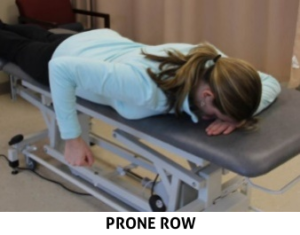

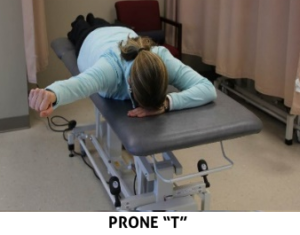



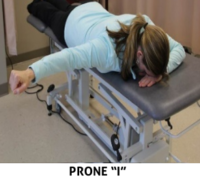

Scapula stabilization exercises
- Range of motion exercises which help to restore the normal shoulder movements. The restriction of range of motion is quite common in all shoulder pathology cases. In slap lesion the restriction of internal rotation, flexion and abduction is common. Range of motion exercise for shoulder is patient should move the shoulder actively through its full range (pain free).
• Active assisted range of motion exercise to shoulder
• Active range of motion exercise to shoulder
- Strengthening exercises should mainly focus on the muscle of rotator cuff (dynamic stabilizer). These four muscles surround the shoulder and help to keep shoulder in place while move the arm. Strengthening the muscles around the shoulder blade and arm also help to provide stability to shoulder after a slap tear.
- Isometric exercise to shoulder (flexors, extensors, internal rotators, external rotators, abductors).
- PNF Upper limb D1 and D2 patterns.
- Resistance band exercise to scapula, shoulder and elbow as follows:


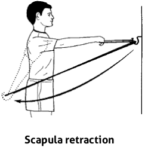



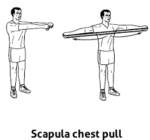



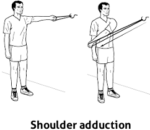



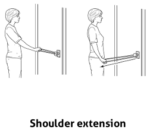



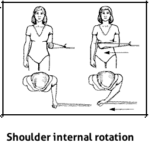





Dr. Vedha Valli. N (PT)
Consultant Physiotherapist,
Spectrum Physio Center,
Sita Bhateja Speciality Hospital,
8 & 9 O’Shaughnessy Road,
Langford Gardens, Bangalore 560 025
Ph: +91 80887 73399



